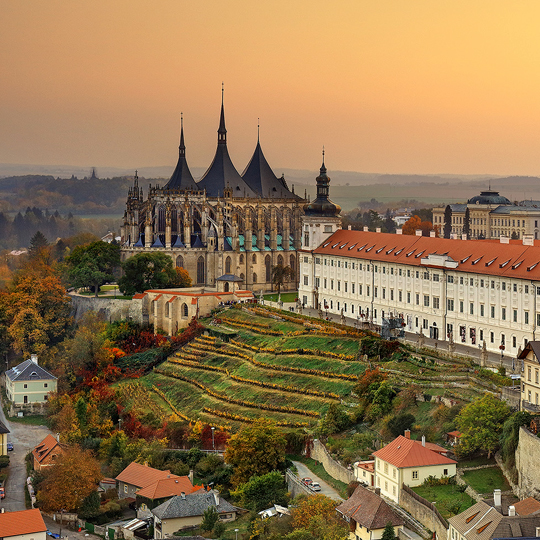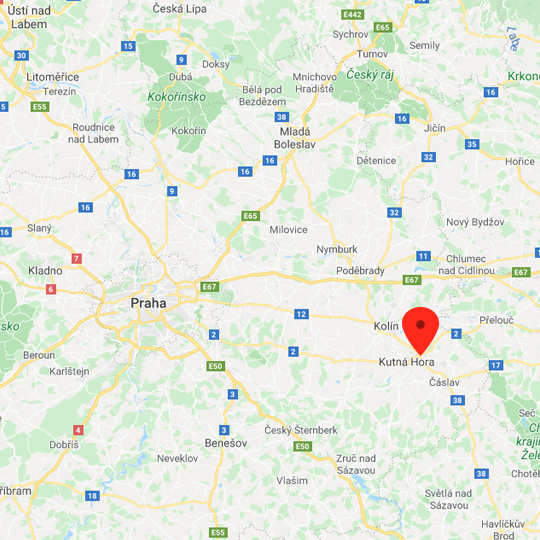Kutná Hora
The former royal mining town of Kutná Hora (UNESCO) is, along with three hundred other protected sites, one of the leading historical complexes within the territory of the Czech Republic. It came into being spontaneously in the second half of the 13th century at the site of silver mines that made the Czech sovereign one of the richest rulers in the Europe of that time. The city, which had abundant yields from the mines, developed throughout the centuries and often played an important role in the political life of the country. Kutná Hora was a favourite place of the Czech king, Wenceslas IV. The Kutná Hora Decree, which modified the rights at the Prague University, was issued in the town and Vladislav Jagiellonian was elected the Czech king in Kutná Hora. The strong Czech (Prague) penny was minted there until 1547. The most important town monument is the Cathedral of St. Barbara, the patron St. of miners.
The former royal mining town of Kutná Hora (UNESCO) is, along with three hundred other protected sites, one of the leading historical complexes within the territory of the Czech Republic. It came into being spontaneously in the second half of the 13th century at the site of silver mines that made the Czech sovereign one of the richest rulers in the Europe of that time. The city, which had abundant yields from the mines, developed throughout the centuries and often played an important role in the political life of the country. Kutná Hora was a favourite place of the Czech king, Wenceslas IV. The Kutná Hora Decree, which modified the rights at the Prague University, was issued in the town and Vladislav Jagiellonian was elected the Czech king in Kutná Hora. The strong Czech (Prague) penny was minted there until 1547. The most important town monument is the Cathedral of St. Barbara, the patron St. of miners. The leading architects of the high and late Gothic periods in Bohemia participated in the construction of this wonderful structure – the construction was commenced by the Parléř works and then continued by Matyáš Rejsek and Benedikt Rejt. From among the other monuments, the Italian Court, which was the original mint and the place where visiting sovereigns had their seat, must be mentioned. The castle museum contains the Czech Silver Museum, which has three viewing trails offering a view of the world of the silver of the aristocracy and the miners, including an attractive tour of a medieval mine. The monastery at Sedlec u Kutné Hory (established in 1142), which includes the Cathedral of the Assumption of the Virgin Mary (UNESCO) and the cemetery church with its unique charnel house and skeletal decor, is of great historic significance. The nearby Žehušice game reserve has a unique white deer-breeding programme.

